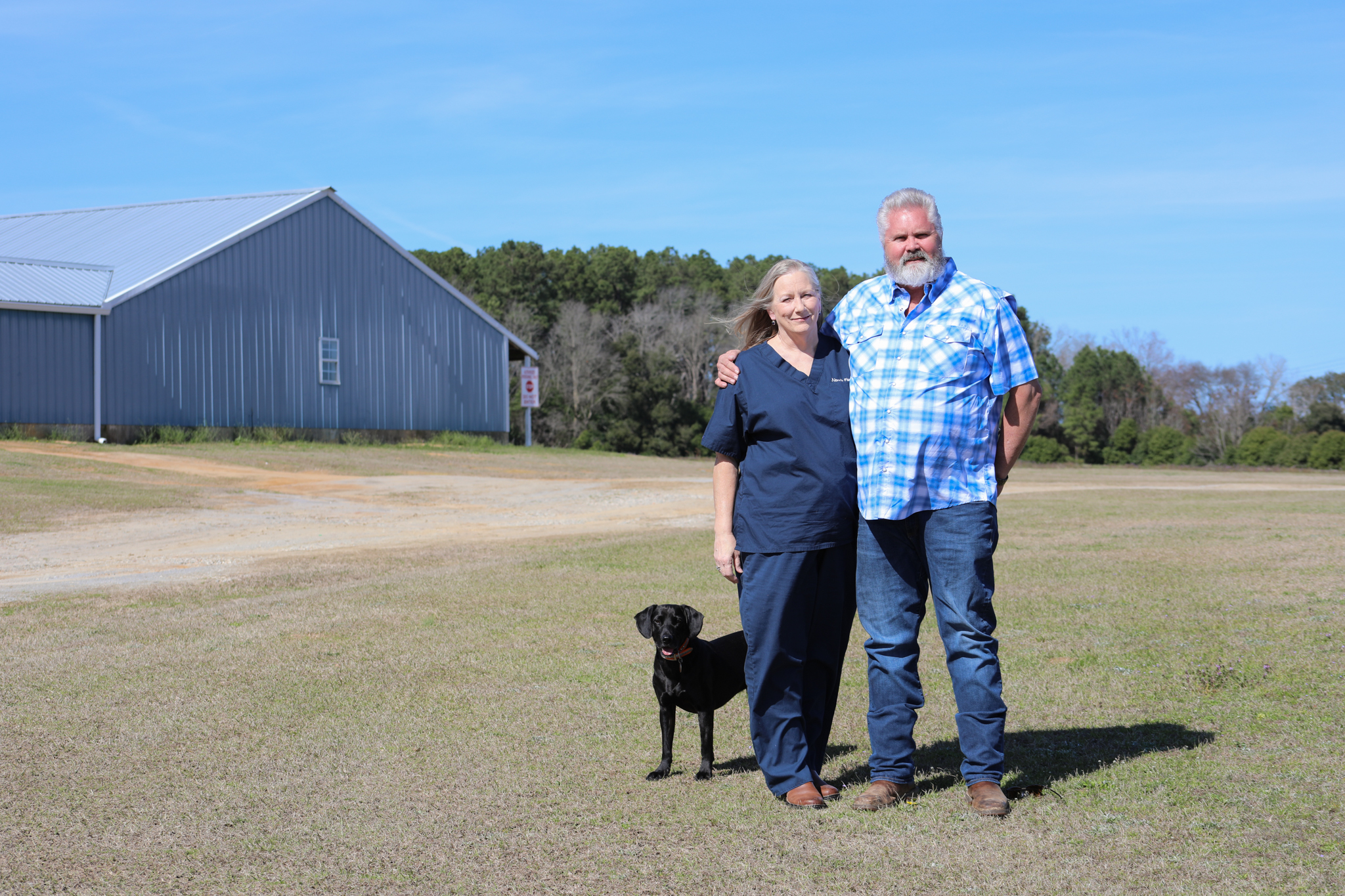
a
The Egg’s Road to Your Table: A Journey that Makes Life Healthy and Delicious
The incredible, edible egg it’s been called. We can thank egg farmers and table egg producers for providing this delectable miracle.

My first experience with an incredible egg farmer goes back a ways. The farmer was my grandmother. In summer days of yesteryear, she’d send me out to gather eggs. Her henhouse, a rickety structure of barn wood and chicken wire, teetered at the edge of a pasture. My task was simple: gather eggs and take them to my grandmother who prepared them for the table. Back then, her farm-to-table eggs made a quick journey.
I recall one journey in particular. Whiteface cattle stared as I, nervous, entered the dark coop. Her hens seemed nervous, too. They fluttered their wings and made a racket. Well, they had reason to be antsy. As I stepped into the henhouse, that notorious escape artist, a rat snake, slithered through an impossible crack between boards. The eggs were warm and a bit messy. That was long ago in a place no longer in existence.
The years brought change.
Eggs’ path to consumers today is an altogether different route. The demand for eggs demands a science-based, high-tech approach. According to the United States Department of Agriculture’s National Agricultural Statistics Service, U.S. egg production totaled 9.10 billion during August 2022. Production included 7.78 billion table eggs and 1.32 billion hatching eggs, of which 1.23 billion were broiler-type and 91 million were egg-type. It states as well that South Carolina produced 89.1 million eggs in 2022.
That’s a lot of eggs.
The demand and popularity are understandable. Easy to beat (excuse the pun) as cooking goes, but hard to beat as nutrution goes, eggs represent one of the healthier food choices. You get lots of protein. No sugar. And you can whip up a snack in no time (See what I did here) from this symbol of hope and purity and more than a few riddles.
The egg’s long provided a conundrum turned cliché: which came first, the egg or the chicken? It’s pretty safe to say the egg came first, because birds evolved from reptiles. It’s logical to believe the first bird hatched from an egg laid by a reptile was similar to, but not quite, a bird itself. That rat snake in my grandmom’s henhouse? Like a ne’er-do-well cousin, it slithered among kinfolk seeing what it could steal.
As for why the chicken crossed the road, I’ll leave that to others. Let’s turn instead to the roads that eggs travel to the table. It’s a road that runs through two farms serving South Carolinians.
Eggs For the Table—Norris Farms
In March of 2005, Susan and Tony Norris began chicken farming. For nigh 17 years, Susan and Tony Norris owned a breeder operation. In January of 2022, they switched to layers. Today, Susan and Tony, co-owners of Norris Farms in Swansea, South Carolina, house birds that lay eggs for consumer use. Table eggs they’re called.

“We grow cage-free birds that have full movement through the chicken house,” said Susan. “In each house, we have approximately 14,000 birds that weigh about 1.5 to 2 pounds.”
They keep layers for about 14 months in three houses. Two houses grow white birds, which lay white eggs, and one house grows brown birds, which lay brown eggs.
Poultry integrators hire farms to raise chickens. Norris Farm’s birds belong to an integrator. Susan and Tony manage the birds for the integrator. Poultry integration represents a form of contract farming. The integrator sells Norris Farm’s eggs to the public. Once the chickens are fully grown, the farmers are paid, and the chickens or eggs are sold to the final market.
Think of integrators as middlemen who work with farms that grow layers and farms that grow broilers. Typically, once eggs leave a farm, they go through the integrator’s grading station to be washed, graded and packaged. Refrigerated trucks take them to your local store where they immediately go into cold storage or a refrigerated display case to help maintain freshness.
“Challenges include labor mostly,” said Susan. It’s a situation familiar to many restaurant owners—a shortage of workers. “Out of six interviews with potential workers,” said Susan, “one agrees to go to work but fails to show up.”
Norris Farms employs two to three people. With birds laying some 39,000 eggs a day, you can see it’s a busy day. Most of the action takes place early in the day.
“The lights come on at 4:30 in the morning,” said Susan. “Artificial light enables the birds to lay in winter. They lay from 6:00 to 10:30 a.m.”
Tony and Susan Norris can relax a bit from noon on. Still, they stay close by in case issues develop. “We do all we can to raise birds to the highest industry standards,” said Susan. “Norris Farms has a generator, alarms and manual backup systems to ensure that the birds get quality food, air and water at all times.”
The high price of eggs is a concern to many Americans. Avian flu is one culprit.
“Bird flu hit up North and the East Coast, but South Carolina didn’t suffer the bird flu,” Susan noted. Even so, Susan, Tony and workers at Norris Farms do all they can to prevent the possibility of infection. Workers wear protective suits that cover shoes and all. Other high-price factors include the high cost of fuel and poultry food.
Susan and Tony Norris are early risers, something most farmers find familiar. They enjoy owning their own business and having afternoons that are far less demanding than mornings. And many a morning, thanks to farms like Norris Farms, many a South Carolinian enjoys eggs, be they scrambled, fried, poached, boiled or a component of other foods.
Eggs That Become Broilers—Fieldale Farms
John Blakely is the assistant breeder manager for Fieldale Farms in Baldwin, Georgia, where they raise eggs to become chickens. “We raise pullets and roosters we get from primary breeders. We raise them in houses and take them to growers, contract farms.” Consider Fieldale Farms an integrator.
“We have 127 hen houses and 72 pullet houses, known as rearing houses. We have 900 roosters per house, which contain 10,000 to 11,000 hens. We take pullets out when they reach 21 weeks of age. We pull roosters out at 22 weeks,” Blakely added. (Note: A hen less than a year old is a pullet. A rooster less than a year old is a cockerel.)
“We raise eggs to become broilers, about four million a week, spread out over 100 houses,” Blakely said. “Once they’re raised and about 25 weeks old, they go into production. By 65 weeks of age, their productivity wanes.”
Fieldale Farms’ chickens go to growers in the northwest corner of South Carolina in places such as Walhalla and as far south as Elberton, Georgia and as far north as Cleveland, Georgia.
Like brewmasters, cheesemakers and fromagers who turn milk into cheese, and Napa Valley vintners who process grapes into wine, producing broilers is all about time and temperatures.
“We gather eggs several times a day by conveyor belt,” John said. “The belt takes eggs to the front of the house where the egg room sits. The eggs are cooled to 65 to 68 degrees Fahrenheit. That’s the optimum temperature to prevent embryonic development,” Blakely said.
The eggs raised at Fieldale Farms aren’t for human consumption. The cooling requirement for eggs to be eaten is more exacting.
“The U.S. Food Drug and Administration (FDA) regulations for eggs for consumption require that they be cooled at 45 degrees Fahrenheit within 36 hours of being laid,” said Blakely.
“Egg trucks haul eggs to the hatchery and they’re put into incubators at the appropriate time. They remain in the incubator for 18 days and in the hatcher for three days.”
Fieldale Farms raises eggs destined to become broilers. “Other farms raise broilers from the eggs,” said Blakely. “Broilers weigh about 4.5 pounds live weight when caught.” Larger birds can weigh 6.75 to 7 pounds. The smaller the bird, the smaller the breast. From start to finish, the process takes 12 to 13 weeks.
Egg farmers give hens the best care possible. They do all they can to keep hens disease free, providing them nutritious feed and continuous access to clean water, while using the best management practices to reduce stress. Birds left outside, it should be noted, suffer disease and predation by foxes and coyotes.

Back in the day, my grandmother made do best she could, but I saw that rat snake more than once. The chickens she raised, gallus domesticus, layed what she referred to as hen fruit, and their journey was a short one to her kitchen.
Modern eggs that journey from farm to table, farm to fork, if you like, make a simpler journey than meat. Still, a lot of precision and work attend the eggs’ production. Once eggs leave the farm, they go through the grading station to be washed, graded and packaged. Then they’re on their way to your local store.
The next time you reach for a fresh, plump fryer or fried chicken breast, consider the journey it’s taken to reach you. It’s a journey requiring six legs. First come the chicks known as pullets, which are destined to mature and join breeder hens and roosters. Next , the eggs are collected and delivered to hatcheries. The chicks grow in houses providing all they need in a healthful, clean way. When the chickens reach an ideal weight, they’re transported to the processing plant, packaged and inspected. The fifth stop involves delivery to the markets. The sixth leg? Meal time.
A breakfast of steak and eggs? A Sunday dinner of fried chicken? Thank farmers like the Norrises and John Blakely of Fieldale Farms.